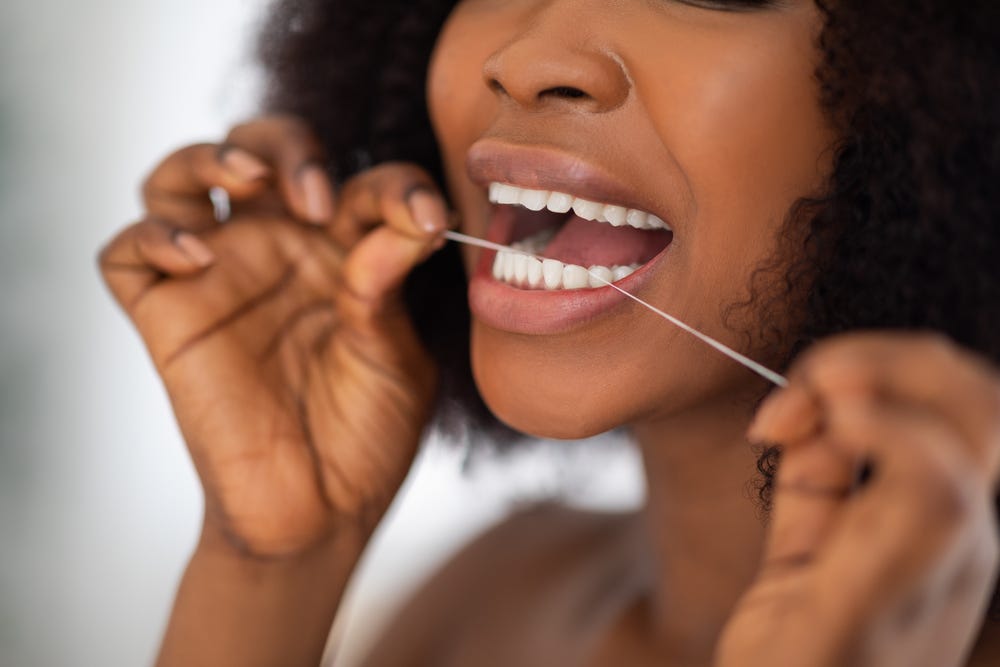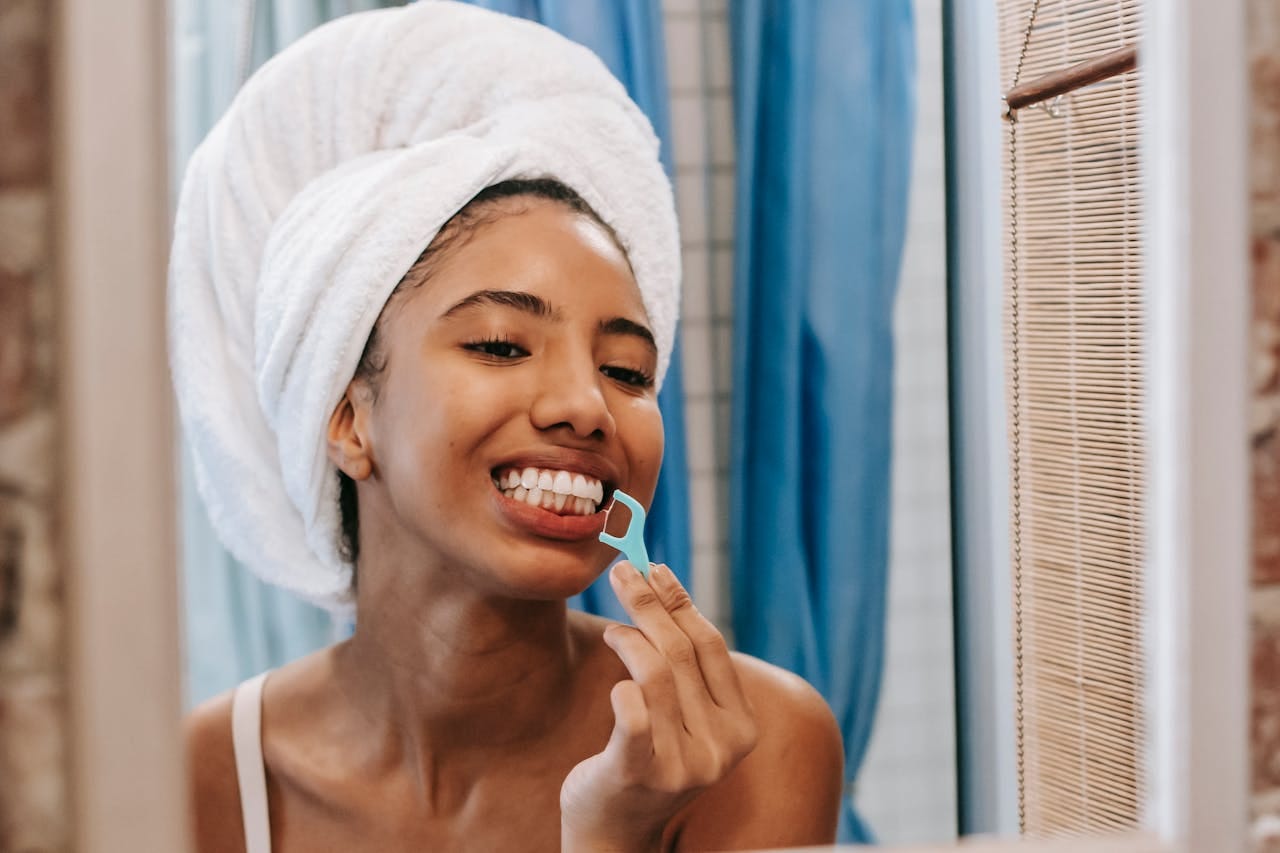The Hidden Chemistry of a Morning Habit
Flossing, where I grew up in New York, means stepping out like you mean it—flexing a new fit, a watch that catches the train lights, an energy that says, “I’m up.” It’s playful, a little combative, often met with a grin and the challenge, “Oh, you trying to floss?” But there’s another “flossing” we were all told to do—thread between teeth, every night, no excuses—and it turns out that version isn’t as harmless or as settled as we’ve been taught.
Dental flossing, in the clinical sense, is the use of a thin filament, traditionally silk, later nylon and now all kinds of polymers, to scrape biofilm from the tight spaces a brush can’t reach. The origin story runs through New Orleans: in 1819, dentist Levi Spear Parmly urged people to draw waxed silk “through the interstices of the teeth,” decades before floss hit store shelves; Johnson & Johnson patented floss in 1898, and nylon replaced silk during World War II, reshaping the product we still pull from plastic cases today.
For years, flossing was gospel. Then, in 2016, the Associated Press asked a basic question: Where’s the proof? The U.S. government quietly removed the flossing directive from its Dietary Guidelines, acknowledging the evidence base hadn’t met research standards. Reviews the AP highlighted called the evidence “weak” and of “very low” quality—less a slam on flossing than a flashlight on the thinness of the science we’d been leaning on. Dentists pushed back, but the moment mattered; it told the public to separate habit from hard proof.
What does the research actually say? First, behavior: about 32% of U.S. adults report flossing daily, 26% of men and 37% of women, meaning most of the country doesn’t do it every day despite professional advice. Second, biology: flossing (like vigorous toothbrushing) can create tiny gum injuries that briefly open the door for bacteria to slip into the bloodstream—transient bacteremia—which is usually harmless for healthy people but not trivial for those with certain heart conditions. Ironically, long-term good oral hygiene lowers the very risks that short-term micro-injuries can pose.
There’s also a chemical angle the public is only beginning to weigh. In 2019, researchers reported that women who used Oral-B Glide were more likely to have higher blood levels of PFHxS, a type of PFAS—the “forever chemicals” tied (in broader literature) to immune, hormonal and metabolic problems. Product testing found fluorine, a PFAS marker, in several Glide and competitor flosses. Consumer advocates and journalists amplified the finding; class actions followed, including a New York case alleging PFAS in Glide’s “Pro-Health” floss. Courts later dismissed key suits for evidentiary reasons, stressing that screening for total fluorine didn’t prove specific PFAS in the sold product. Still, the episode put a bright, necessary light on what’s in our mouths night after night and accelerated guidance to choose PFAS-free materials like silk or other biodegradable options.
If you listen closely, you hear real-world testimony between the lines. Parents noticing gum tenderness in teens who snap floss like guitar strings. Patients with sensitive gums who flare with certain coated flosses but calm down with uncoated silk. Incarcerated people in Westchester even sued over being denied floss, claiming it led to pain and tooth loss—proof not that flossing is toxic, but that interdental cleaning matters to lived health. Our mouths are ecosystems; small choices ripple.
So where does that leave a community that understands both kinds of “flossing”—the sidewalk strut and the nightly ritual? First, don’t confuse swagger with wisdom. In style, flossing is about the surface; in health, it’s about what you can’t see. The lesson isn’t “never floss.” It’s “floss smarter.” If you floss, favor gentle technique: curve the thread in a C-shape, hug the tooth, slide, not saw, below the gumline. Consider the material and coating; if you’re concerned about PFAS, reach for silk or a clearly PFAS-free product. And remember: for many mouths, interdental brushes or water flossers outperform string, especially where spaces are larger or fingers are less nimble. The aim is control of interdental plaque—how you get there can be personal.
History and statistics teach humility. A practice canonized for a century can still be built on partial evidence; a product celebrated for “glide” can carry chemical questions that take years to resolve in labs and courts. Meanwhile, communities bear the outcome. The Bronx grandmother budgeting for a cleaning she keeps postponing. The Harlem dad whose gums bleed because nobody taught him technique, only shame. The student athlete who swaps to a PFAS-free silk floss and notices the irritation fade. Health is culture, too.
If New York slang taught us that flossing is a performance, oral health teaches us that maintenance is a discipline. Let’s keep the shine, lose the shortcuts, and demand products and proof that respect our bodies as much as our style.
That’s how we elevate, for real.
By Kaba Abdul-Fattaah.



